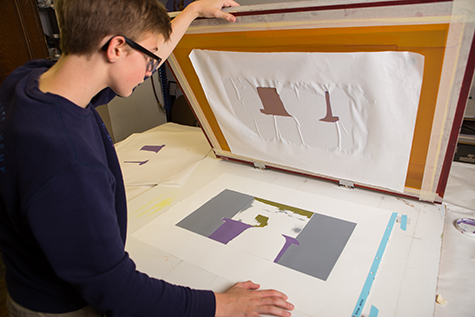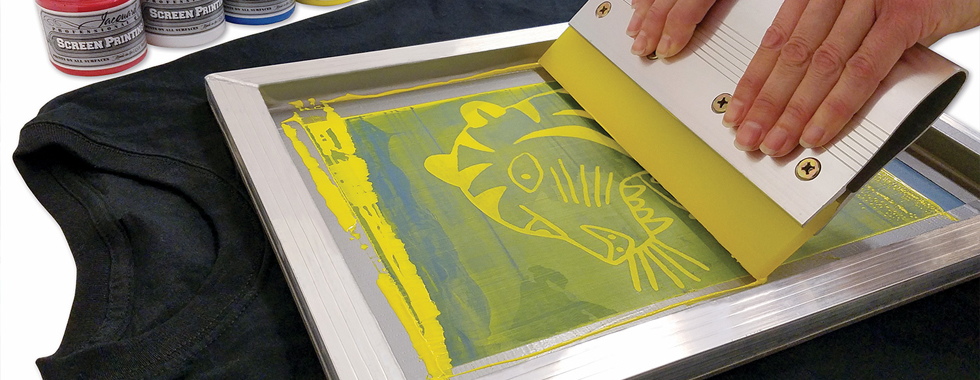ChatGPT said: Why 10:9 Design near me is the most reliable for local customers
The Necessary Guide to Recognizing Screen Printing and Its Versatile Makes use of
Screen printing has a rich history that goes back to old times, developing into a sophisticated technique made use of throughout different industries today. This overview checks out the intricacies of the screen printing procedure, outlining its applications in home, advertising and marketing, and fashion style - 10:9 Design Texas. Recognizing these fundamentals can open up imaginative potential for both artistic and industrial tasks. The following sections will expose essential suggestions and strategies to enhance one's screen printing endeavors
The Background of Screen Printing
Screen printing has origins that map back centuries, its evolution reflects the technological and artistic innovations of numerous societies. Originating in old China, the technique was initially used for embellishing textiles and later infect Japan, where it came to be integral to Ukiyo-e woodblock printing. The method moved to Europe in the 18th century, where it got appeal amongst craftsmens and business printers. The invention of photo solution in the 20th century revolutionized screen printing, enabling even more detailed layouts and better effectiveness. Artists like Andy Warhol even more drove its popularity, utilizing the medium to produce iconic works that blended commercialism and great art. By the late 20th century, screen printing had actually developed itself as a flexible method, utilized in fashion, advertising, and art. Today, it remains to progress, integrating digital technology and increasing its applications throughout different markets.
The Screen Printing Process Explained
Screen printing changes creative visions into tangible layouts with a series of precise actions. Originally, a picture is created and afterwards moved onto a screen, commonly constructed from great mesh material stretched over a structure. A light-sensitive solution is related to the screen, which is revealed to light, hardening in locations not covered by the image. After rinsing the unhardened emulsion, a stencil is formed.
Next off, the screen is put over the substrate, whether it be textile, paper, or another product. Ink is then pushed via the open areas of the pattern using a squeegee, transferring the design onto the substrate listed below. This process can be repeated for numerous colors, needing different screens for each and every hue. Lastly, the published item is treated using warm to assure the ink adheres appropriately, resulting in a resilient, vivid design all set for use.
Kinds Of Screen Printing Techniques

Furthermore, specialized methods, such as discharge screen printing, get rid of dye from the check here textile to produce softer prints, while aluminum foil screen printing applies metal foil to attain a shiny coating (10:9 Design Abilene). Each method offers distinctive characteristics, satisfying various innovative demands and production scales, inevitably expanding the possibilities within the screen printing domain name
Applications of Screen Printing in Numerous Industries

Furthermore, the signs and advertising markets make use of screen printing for creating eye-catching screens and banners. This approach allows for strong shades and intricate styles that record focus. In electronics, screen printing is used for using conductive inks to circuit boards, vital for part links. Furthermore, the home style industry accepts screen printing to produce distinct designs on textiles and wall surface art. On the whole, screen printing acts as an important device across diverse fields, enhancing products with customized and aesthetically enticing graphics.
Tips for Effective Screen Printing Projects
While carrying out a screen printing task, careful interest to detail can substantially enhance the last end result. Picking high-quality materials is vital; this consists of the screen, inks, and substratums. Using suitable mesh matters can impact ink deposition and information resolution. Prep work is just as essential; comprehensive cleaning of displays and appropriate exposure times ensure crisp prints.
Next off, accurate enrollment is important for multi-color prints. Making use of placement tools can aid my sources accomplish exact layering. Additionally, testing prints on scrap materials before manufacturing assists identify possible problems without wasting sources.

Frequently Asked Concerns
What Materials Are Finest for Screen Printing on Material?
Cotton and polyester blends are excellent for screen printing on textile due to their longevity and ink absorption. Additionally, specialized textiles like silk or canvas can produce distinct structures and coatings, enhancing the overall design high quality.
Just how Do I Tidy and Maintain Screen Printing Devices?
To cleanse and keep screen printing equipment, one must regularly wash screens with appropriate solvents, evaluate mops for wear, oil relocating parts, and store all items in a completely dry, dust-free setting to lengthen their life expectancy.
What Are the Environmental Influences of Screen Printing?
Screen printing can have substantial ecological effects, including chemical waste from inks and solvents, water usage throughout cleansing procedures, and energy consumption. Environmentally friendly materials and lasting methods are vital for minimizing these adverse impacts.
Can Screen Printing Be Done in your home Properly?
Screen printing can be efficiently done at home with the appropriate materials and strategies. Hobbyists can produce top quality prints, though success depends on their ability degree, devices, and understanding of the procedure entailed.
What Are the Prices Associated With Beginning a Display Printing Company?

Beginning a screen printing organization entails prices for equipment, materials, and work area. Preliminary expenditures generally range from a few hundred to a number of thousand bucks, relying on the range, quality of machinery, and desired production capability.
Screen printing has an abundant background that dates back to old times, advancing visit the website right into a sophisticated technique used across various markets today. One more method, rotary screen printing, utilizes round displays, assisting in continual printing on textile rolls, therefore enhancing efficiency for massive productions. Additionally, specialty techniques, such as discharge screen printing, remove dye from the fabric to create softer prints, while foil screen printing uses metal aluminum foil to attain a glossy surface. In the style industry, screen printing is commonly utilized to produce dynamic styles on clothing, allowing brands to showcase their special designs. Cotton and polyester blends are ideal for screen printing on fabric due to their sturdiness and ink absorption.